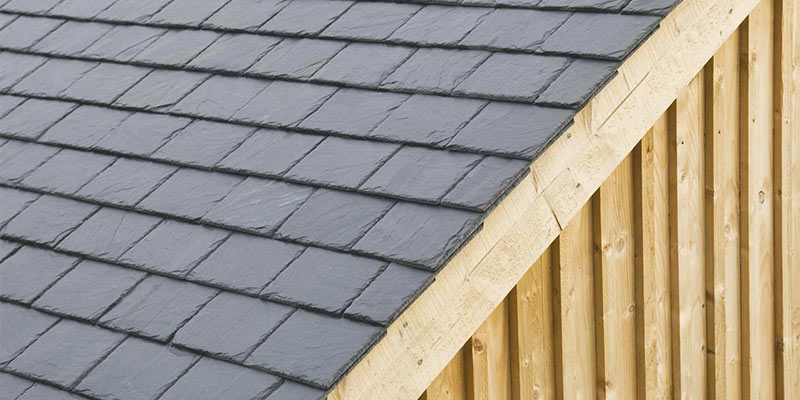
Good quality and well-cared for sheds are usually robust, which means you won’t need to replace on a frequent basis. Smaller issues like a torn felt-roof is easy to repair, yet larger issues which include large warped wood areas or unstable bases might mean you need to invest in a new one.
Here is a 10-step health-check to establish whether your shed may need replacing.
10 Step Shed Health Check
1. Examine The Roof Felt
Check for splits or holes in your roof felt, and make sure the felt in the roof is still waterproofed.
Repair When: You notice a split or a hole as soon as you can, making sure there are no damages to the actual roof timbers.
Replace The Shed If: When the roof timbers have already rotted.
2. Check For Leaks
After rain, go inside the shed to ensure there is no water that is getting in.
Repair If: The leak is still new, and you can stop the leak from returning.
Replace The Shed When: There are already many leaks which have caused damages regarded as significant.
3. Examine For Wood Warping
Wood can warp when it becomes damp, particularly when your shed is on a base that is not level.
Repair When: Only small areas are showing signs of warping. In certain cases, wood that is warped can still be manipulated into its original shape, but in most cases, you will need to replace it.
Replace The Shed When: The warping is so bad that the shed is not operable anymore.
4. Check On The Stability Of The Shed
A shed where that is warped, rotting or when the fastenings have loosened often become unstable. Test the shed to make sure it is strong and sturdy.
Repair When: You only need to replace nails or tighten screws.
Replace The Shed If: It looks like it is ready to collapse.
5. Examine The Base
To protect the shed from warping and damp, the structure needs to be positioned on a base that is level, raised above soil along with away from any standing water.
Repair When: The shed is still in a good condition. Or create another base that will keep your shed away from soil and water.
Replace The Shed If: The base is significantly warped, or the shed is rotten and damp from resting in soil.
6. Check For Wood That Is Damaged
There are a number of events that can result in damages to your shed. This can include tree branches that have fallen onto the roof, onto animals or even attempted break ins.
Repair When: When small portions of the shed that were damaged can be repaired.
Replace The Shed When: The damages have become extensive.
7. Check The Floor
The floor is usually a common place where the shed will first start to show damages, this is especially true when the shed was directly positioned onto the soil or grass. Check to see if the floor is not warped, rotting or damp.
Repair When: You are able to move your shed onto an improved base or you are able to easily replace your shed floor.
Replace Your Shed When: Damages that originated from the floor have already spread into the main structure.
8. Locate Loose Panels
Examine the inside and outside of the shed to make sure none of the panels are loose or coming loose.
Repair If: There are only a few wood pieces that you need to nail down.
Replace If: The shed is not holding securely together anymore.
9. Inspect For Rot
Wood that is exposed continually to damp will start to rot. Inspect for wood that is decaying or soft.
Repair When: The rot is only exposed in small areas and you are able to replace it.
Replace The Shed When: The rot has undermined the shed’s structure, or the rot is significant.
10. Test The Door and The Windows
Do the doors or windows operate smoothly and they can close properly, and that they can keep rain and the wind out?
Repair When: You are able to fill in small gaps around the door or windows with a sealant.
Replace The Shed When: The door is warped so badly that you cannot repair it.
